Family : Congridae

Text © Giuseppe Mazza

English translation by Mario Beltramini
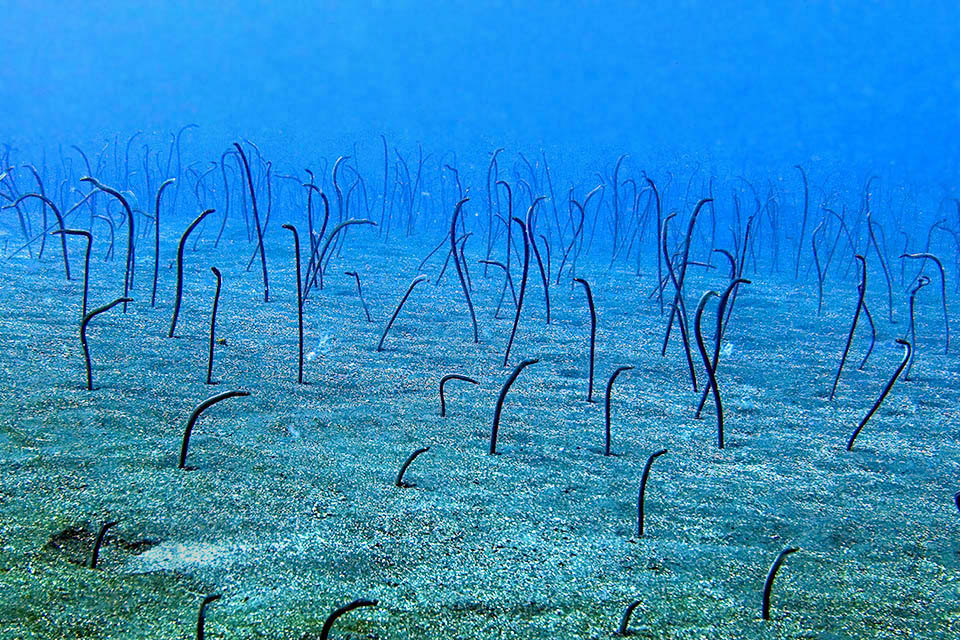
Present on both sides of Atlantic, the Brown garden eels (Heteroconger longissimus) look like stems moved by the wind, dangling on the seabed © Pascal Girard
The Brown garden eels or Garden eels get this unusual name from the fact that they emerge next to each other from the sand wavering thick, vertically, in colonies that may count even thousands of individuals, giving the impression, on the sandy bottoms, of a garden with stems moved by the wind.
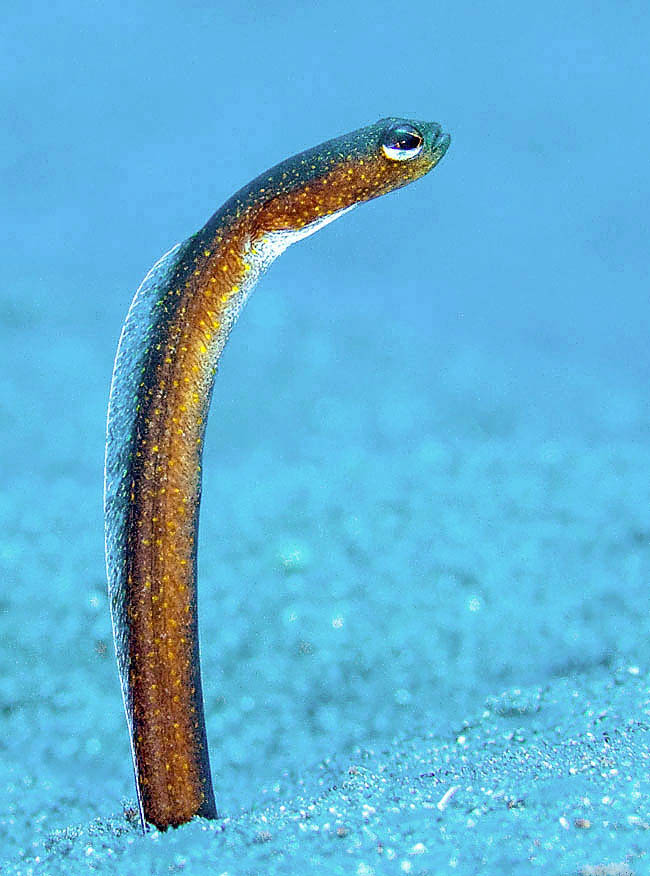
Up to 51 cm long, they protrude at most by a third from the burrow, ready to retreat at the least sign of danger © Terence Zahner
The Brown garden eel (Heteroconger longissimus Günther, 1870) belongs with the congers to family Congridae, subfamily Heterocongrinae, inserted into the class of the Actinopterygii, the ray-finned fishes, and in the order of the Anguilliformes that includes also the moray eels.
The genus Heteroconger, created by Bleeker in 1868, originates from the Greek “ἕτερος” (héteros), different, with reference to the Congridae of the time that grouped the genera Conger, Ophiosoma (nowadays Ariosoma), Uroconger and Neoconger presently inserted in family Moringuidae.
The specific term longissimus, very long in Latin, gets its origin, instead, from the tail that measures twice the body.
Zoogeography
Heteroconger longissimus lives in tropical and subtropical waters on both sides of the Atlantic but mainly in the Caribbean, from Bermudas and Bahamas up to the Gulf of Mexico, Florida, Antillas, Yucatan, Belize and Honduras up to Brazil.
In the eastern Atlantic it is found only in Madeira, Canary Islands and along the coasts of Senegal with significantly lower populations and there’s someone who speaks of two different species.
Ecology-Habitat
The colonies form between 20 and 60 m of depth, but in shallower waters, up to about 10 m, when the bottom is particularly rich in prey and favourable for settlement.
For instance, in the Gulf of Mexico, they occupy an area estimated at over 12.000 square kilometres.
Usually they look for sandy zones close to the madreporic formations rich in life and food.
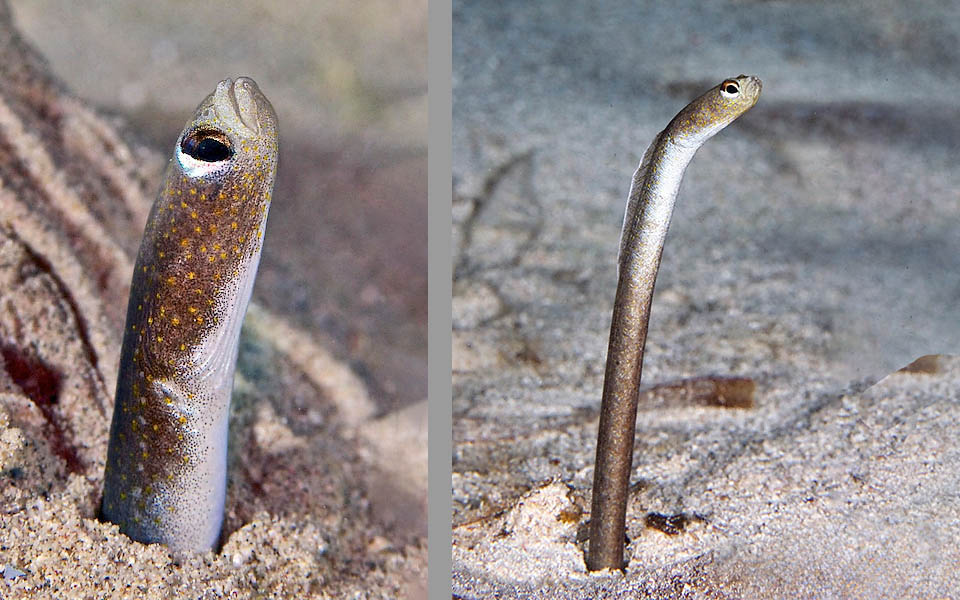
Left, one peeps with caution at the door of the house, whilst the right one stood up to get a better look on the preys carried by the current © Allison & Carlos Estape
In the garden eels world every fish has its own little hunting territory with the den at the centre: a long burrow dug in the sand and consolidated by mucus that transforms in cement hardening when in contact with water.
During the night Heteroconger longissimus disappears completely into its den whilst during the day is ready to retreat at the first sign of danger.
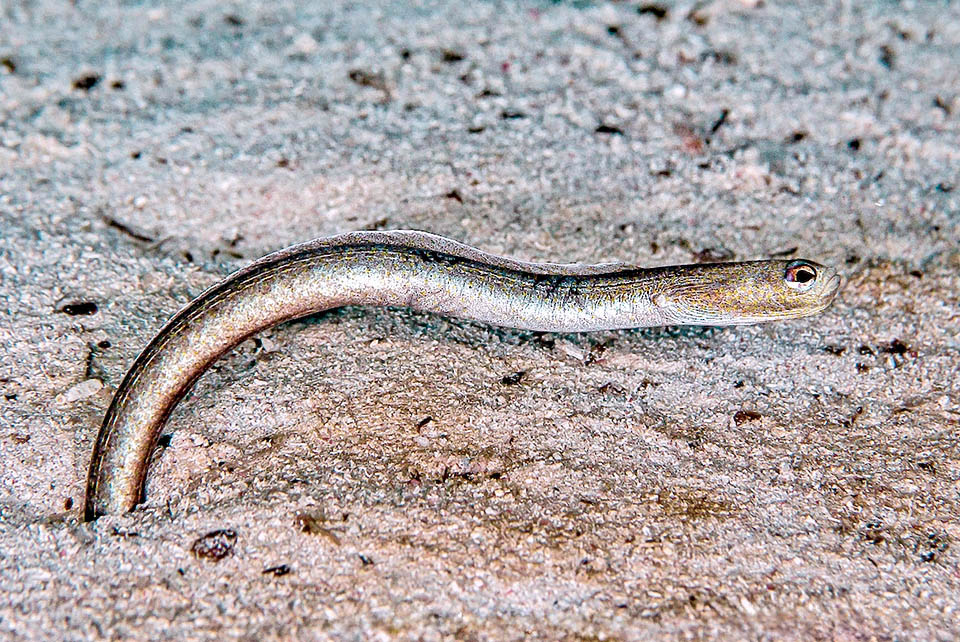
This horizontal has perhaps seen a small prosobranch gastropod getting closer, unaware of the danger, to its residence © Allison & Carlos Estape
It protrudes at most a third of its length, erect and ready to catch the passing-by zooplankton, mainly copepods and eggs carried by the currents, without ignoring the tiny stray debris and the small prosobranch gastropods that approach its home unaware.
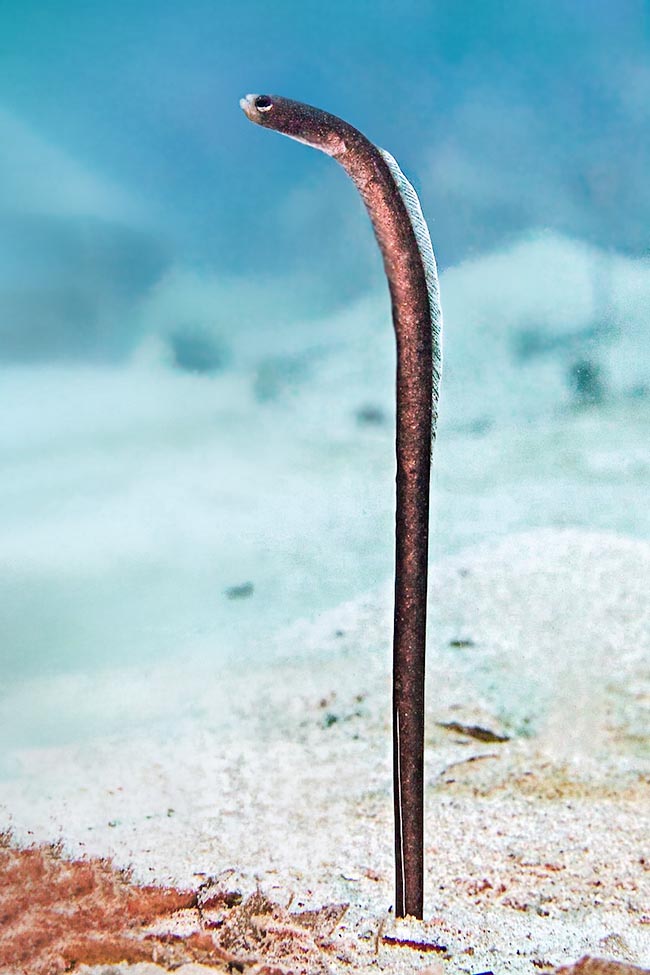
To see far preys this has probably raised too much, attracting the attention of the benthic predators © Allison & Carlos Estape
Morphophysiology
Heteroconger longissimus has 158-168 vertebrae.
The maximum reported length is 51 cm with a diametre of 1,5 cm and there is no sexual dimorphism.
Like all Anguilliformes the pelvis fins are absent.
The tip of the tail is rigid and the caudal fin, small but visible, merges with the dorsal and the anal forming one only long skin crest.
The pectoral ones, typical of the eels and absent in the morays, are tiny, smaller in size than the big eye with brown iris in the upper part and white below.
In front of this we easily note the hole of the rear nostril, whilst the two front ones, tubular, are located on the snout.
The mouth is short and oblique with protruding lower jaw and bended teeth present also on the palate.
The anterior part of the head and the body are of dark brown colour with a small clear punctuation, whilst the belly and the throat are white.
Also the dorsal fin and its extension end with a clear edge.
Ethology-Reproductive Biology
Heteroconger longissimus is a gonochoristic species, that is with separate sexes that reproduces mainly during the warm season.
The eggs are planktonic and like all Anguilliformes the larvae, called leptocephali, as they grow, take the form of a transparent willow leaf, with very small head and protruding needle-shaped teeth.
Brown garden eels spend their larval stage, lasting 6-8 months, in very deep waters and have been found even over 900 metres.
They do not feed on zooplankton as normally the larvae of the fishes do, but seize the tiny food particles that pass by them.
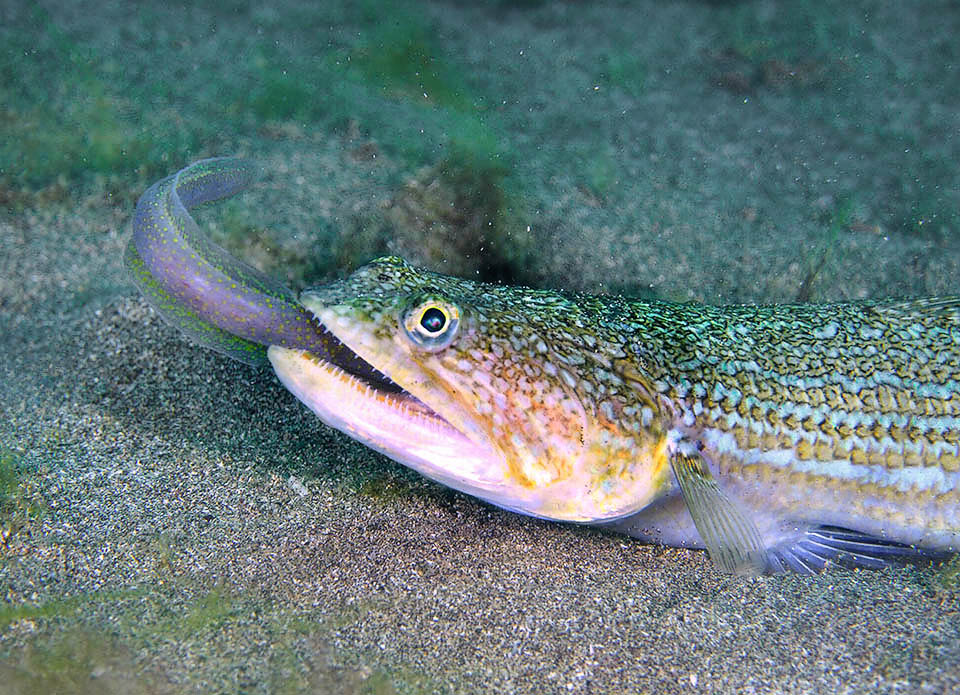
A lizardfish (Synodus saurus) takes advantage and jumps like a lightning on the rash garden eel © Dennis Rabeling
They can dart backwards with rapid undulating movements or curl assuming the look of a wandering gelatinous cylinder, similar to a small jellyfish that does not arouse the predators’ interest.
They go up only after the metamorphosis and when they find the suitable bottom they dig the burrow for their sedentary life.
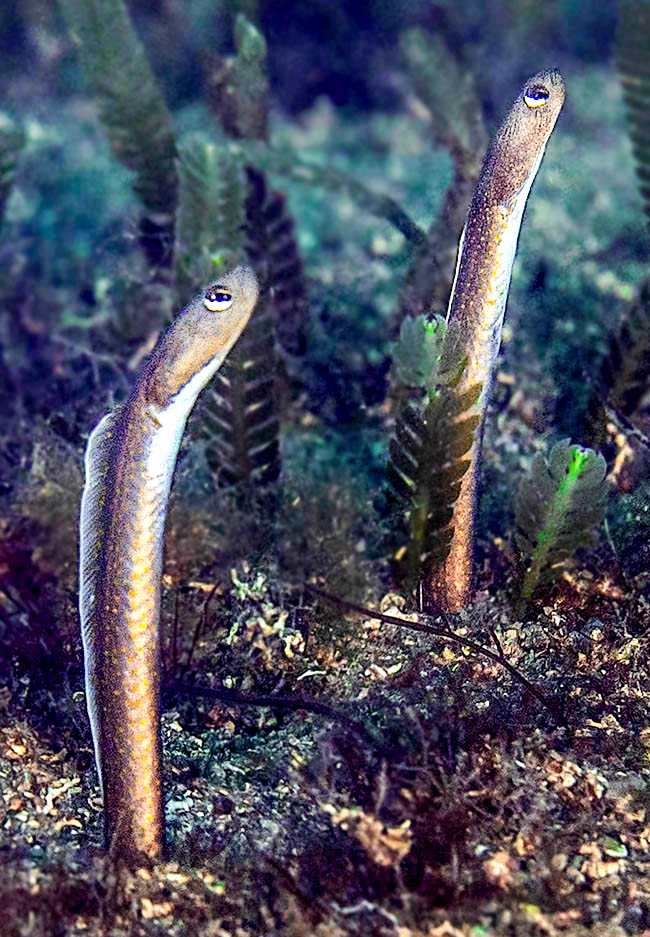
The Brown garden eels do not show any sexual dimorphism. It seems that they reproduce in summer and the larvae, called leptocephali, grow for 6-8 months in deep waters, even over 900 metres © Allison & Carlos Estape
The resilience of the Brown garden eel is mediocre with a minimum time of 1,4-4,4 years for the doubling of the populations.
The fishing vulnerability index, moderate but not negligible, marks presently 40 on a scale of 100.
Human activities aside, in nature the worst foe of Heteroconger longissimus is the Common eagle ray (Myliobatis aquila), a ray frequenting the sandy bottoms and often causes massacres of garden eels.
Thanks to the Ampullae of Lorenzini, a particular sense organ present in rays and sharks, it can in fact detect the magnetic fields emitted by the preys, and so easily discovers the garden eels also during the night when they are all holed up in their dens.
Various benthic fishes, such as Synodus intermedius or Synodus saurus, the so-called lizardfishes, they then swoop very quickly during the day on the inattentive ones who protrude too much from their openings.
However, Heteroconger longissimus appears since 2011 as “LC Least Concern”, in the IUCN Red List of the species considered endangered.
Synonyms: Taenioconger longissimus (Günther, 1870); Nystactes halis Böhlke, 1957; Heteroconger halis (Böhlke, 1957); Nystactichthys halis (Böhlke, 1957); Taenioconger halis (Böhlke, 1957).
